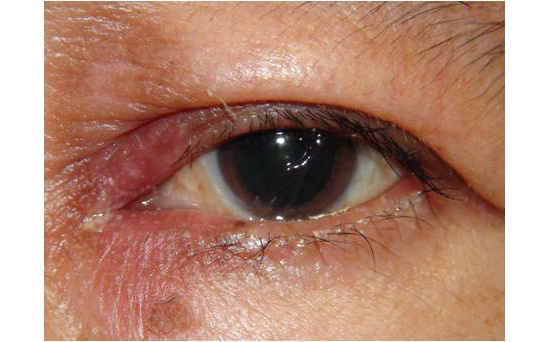1. Chintagumpala M, Chevez-Barrios P, Paysse EA, Plon SE, Hurwitz R. Retinoblastoma: review of current management. Oncologist. 2007; 12(10):1237–1246.

2. Singh AD, Turell ME, Topham AK. Uveal melanoma: trends in incidence, treatment, and survival. Ophthalmology. 2011; 118(9):1881–1885.

3. Dendale R, Lumbroso-Le Rouic L, Noel G, Feuvret L, Levy C, Delacroix S, et al. Proton beam radiotherapy for uveal melanoma: results of Curie Institut-Orsay proton therapy center (ICPO). Int J Radiat Oncol Biol Phys. 2006; 65(3):780–787.

4. Mouw KW, Sethi RV, Yeap BY, MacDonald SM, Chen YL, Tarbell NJ, et al. Proton radiation therapy for the treatment of retinoblastoma. Int J Radiat Oncol Biol Phys. 2014; 90(4):863–869.
5. Höcht S, Bechrakis NE, Nausner M, Kreusel KM, Kluge H, Heese J, et al. Proton therapy of uveal melanomas in Berlin. 5 years of experience at the Hahn-Meitner Institute. Strahlenther Onkol. 2004; 180(7):419–424.
6. Chang JW, Yu YS, Kim JY, Shin DH, Choi J, Kim JH, et al. The clinical outcomes of proton beam radiation therapy for retinoblastomas that were resistant to chemotherapy and focal treatment. Korean J Ophthalmol. 2011; 25(6):387–393.

7. Ryan SJ. Retina. 5th ed. London, United Kingdom: Saunders/Elsevier;2013. Vol. 2.
8. Egger E, Schalenbourg A, Zografos L, Bercher L, Boehringer T, Chamot L, et al. Maximizing local tumor control and survival after proton beam radiotherapy of uveal melanoma. Int J Radiat Oncol Biol Phys. 2001; 51(1):138–147.

9. Kodjikian L, Roy P, Rouberol F, Garweg JG, Chauvel P, Manon L, et al. Survival after proton-beam irradiation of uveal melanomas. Am J Ophthalmol. 2004; 137(6):1002–1010.

10. Mosci C, Lanza FB, Barla A, Mosci S, Herault J, Anselmi L, et al. Comparison of clinical outcomes for patients with large choroidal melanoma after primary treatment with enucleation or proton beam radiotherapy. Ophthalmologica. 2012; 227(4):190–196.

11. Caujolle JP, Paoli V, Chamorey E, Maschi C, Baillif S, Herault J, et al. Local recurrence after uveal melanoma proton beam therapy: recurrence types and prognostic consequences. Int J Radiat Oncol Biol Phys. 2013; 85(5):1218–1224.

12. Petrovic A, Bergin C, Schalenbourg A, Goitein G, Zografos L. Proton therapy for uveal melanoma in 43 juvenile patients: long-term results. Ophthalmology. 2014; 121(4):898–904.
13. Demizu Y, Fujii O, Terashima K, Mima M, Hashimoto N, Niwa Y, et al. Particle therapy for mucosal melanoma of the head and neck. A single-institution retrospective comparison of proton and carbon ion therapy. Strahlenther Onkol. 2014; 190(2):186–191.
14. Stannard C, Sauerwein W, Maree G, Lecuona K. Radiotherapy for ocular tumours. Eye (Lond). 2013; 27(2):119–127.

15. Choi YJ, Park C, Jin HC, Choung HK, Lee MJ, Kim N, et al. Outcome of smooth surface tunnel porous polyethylene orbital implants (Medpor SST) in children with retinoblastoma. Br J Ophthalmol. 2013; 97(12):1530–1533.

16. Bharat S, Parikh P, Noel C, Meltsner M, Bzdusek K, Kaus M. Motion-compensated estimation of delivered dose during external beam radiation therapy: implementation in Philips' Pinnacle(3) treatment planning system. Med Phys. 2012; 39(1):437–443.
17. Blaydon SM, Shepler TR, Neuhaus RW, White WL, Shore JW. The porous polyethylene (Medpor) spherical orbital implant: a retrospective study of 136 cases. Ophthal Plast Reconstr Surg. 2003; 19(5):364–371.
18. Alwitry A, West S, King J, Foss AJ, Abercrombie LC. Long-term follow-up of porous polyethylene spherical implants after enucleation and evisceration. Ophthal Plast Reconstr Surg. 2007; 23(1):11–15.

19. Jung SK, Cho WK, Paik JS, Yang SW. Long-term surgical outcomes of porous polyethylene orbital implants: a review of 314 cases. Br J Ophthalmol. 2012; 96(4):494–498.

20. Iordanidou V, De Potter P. Porous polyethylene orbital implant in the pediatric population. Am J Ophthalmol. 2004; 138(3):425–429.

21. Karcioglu ZA, al-Mesfer SA, Mullaney PB. Porous polyethylene orbital implant in patients with retinoblastoma. Ophthalmology. 1998; 105(7):1311–1316.
22. Woog JJ, Dresner SC, Lee TS, Kim YD, Hartstein ME, Shore JW, et al. The smooth surface tunnel porous polyethylene enucleation implant. Ophthalmic Surg Lasers Imaging. 2004; 35(5):358–362.

23. Detorakis ET, Engstrom RE, Straatsma BR, Demer JL. Functional anatomy of the anophthalmic socket: insights from magnetic resonance imaging. Invest Ophthalmol Vis Sci. 2003; 44(10):4307–4313.

24. Fountain TR, Goldberger S, Murphree AL. Orbital development after enucleation in early childhood. Ophthal Plast Reconstr Surg. 1999; 15(1):32–36.

25. Shildkrot Y, Kirzhner M, Haik BG, Qaddoumi I, Rodriguez-Galindo C, Wilson MW. The effect of cancer therapies on pediatric anophthalmic sockets. Ophthalmology. 2011; 118(12):2480–2486.

26. Kirsch DG, Tarbell NJ. New technologies in radiation therapy for pediatric brain tumors: the rationale for proton radiation therapy. Pediatr Blood Cancer. 2004; 42(5):461–464.

27. Yue NC, Benson ML. The hourglass facial deformity as a consequence of orbital irradiation for bilateral retinoblastoma. Pediatr Radiol. 1996; 26(6):421–423.











 PDF
PDF Citation
Citation Print
Print




 XML Download
XML Download